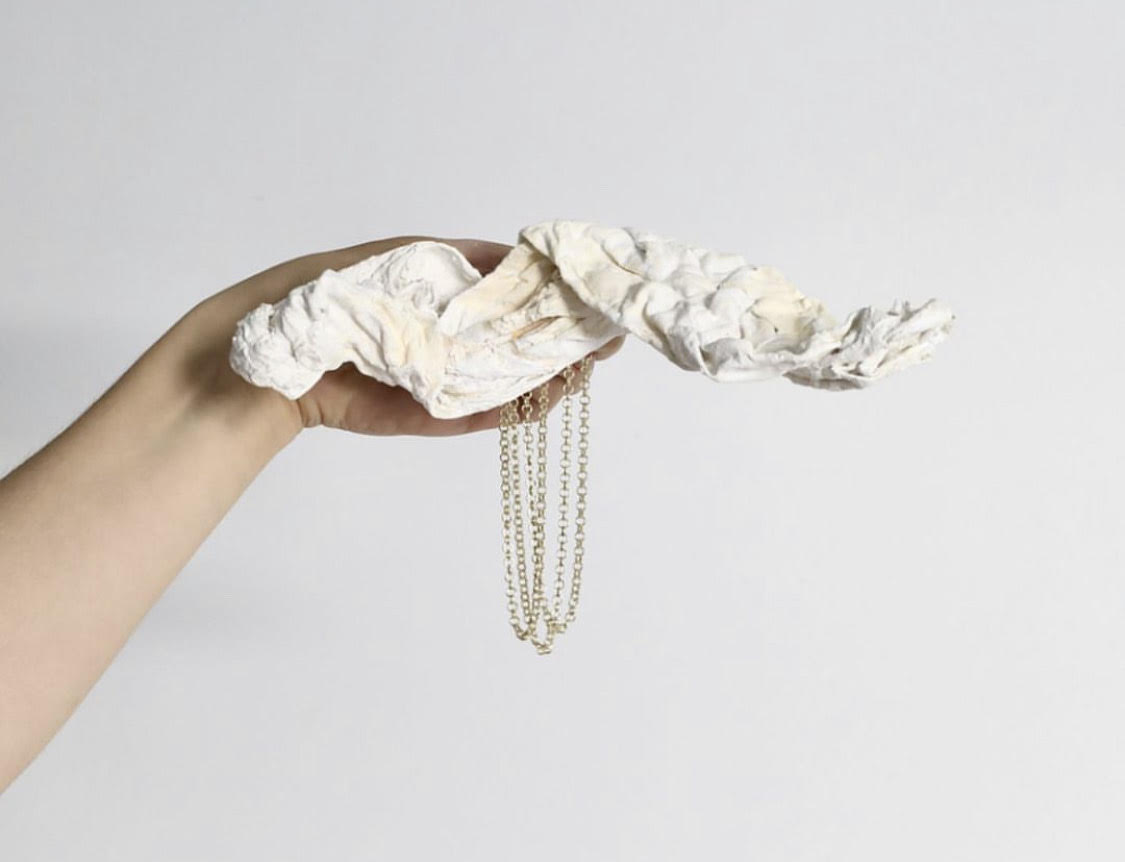Alissar Seyla’s delicate and luminous works depict intimate, tender, and disturbing imagery that bring together nature, dis/connection, and elements of cultural fantasy. She is largely self-taught and uses sculpture, painting, drawing, and writing as vehicles for creative expression.
She abandoned a fine arts degree in Beirut to move to Naarm in 2004 and has since worked sporadically in illustration, painted for private commissions, and earned a PhD in social science. Up until 2016, Alissar divided her time between Naarm, Beirut and Cairo, and is influenced by the abundance and isolation of living in diaspora.
Since 2022, she has shown work in Europe, Lebanon, and Australia, and organised community art fundraisers to benefit Syrian refugees and organisations providing aid in Palestine. From late 2023 to January 2024, she was the inaugural artist in residence at Visual Diary and her solo show, Cultural Safety, explores collective grief in a series of evocative sculptures that represent journeys in migration and trauma. She is the founder of Rage Café, a community circle that meets to discuss non-Western, SWANA-centred artistic and intellectual works, movements, and traditions.
CULTURAL SAFETY
Like many, I hold feelings of deep despair and anger since the most recent escalation of brutality against Palestinians and the blatant attempts by many in power to downplay ongoing atrocities. These feelings influenced me greatly during my residency at Visual Diary, and the subsequent explosion of the painting medium through this collection of sculptures explores the scattered-ness, community connection, and political alienation that has coloured the last six months. There is steadfastness there as well – a hallmark of diaspora – and variations of pattern based on the keffiyeh that has wrapped itself around the forms and thoughts of all my ancestors. The works are predominately based on the concept of the shroud, which can be defined as either a verb: ‘to hide something by covering or surrounding it’, or a noun: ‘a length of cloth or enveloping garment in which a dead person is wrapped for burial’. There is no way for me to talk about the past months without imagery or influence of the shroud featuring heavily – we have borne daily witness to the mounting deaths of Palestinian women, men, and children. The shroud is something we carry with us both in mourning the victims of genocide and in hiding our grief, burying it within ourselves, to avoid accusations of ‘politicising’ social spaces and ‘threatening’ the cultural safety of others. In my residency work, I experimented with different textiles before settling on muslin cloth, which evokes a subtle movement and delicacy even when mixed with clay and plaster. I am largely self-taught and follow my own rules of execution when playing with and combining media. In these sculptures, I used resin and twine; experimented and failed. I shredded my arms and legs while cutting and moulding chicken wire. I sewed and painted almost exclusively between the hours of 2 and 5 am, while listening to the news.The resulting work asks questions about how we might stay true to our creative practice in this moment, with feelings of mutual distrust between ourselves and the systems that sustain art and cultural production. I have been on both ends of the cultural safety policy trend: involved in both writing it and reprimanded by it. There are certain rules we as Arabs are currently being asked to follow about reaction, curation, and construction that demand we hide too much of ourselves and what we know to be true in order to be assured safety and inclusion.In reflecting on my own experience and the oppression felt in our communities – both in Naarm and in the SWANA region – the sculptures follow the shroud in its journey through trauma and migration, indicating multiple forms, paths, and iterations. The result is at once absorbing and unnerving, reflecting a personal and social responsibility to receive, witness, and honour collective grief.
